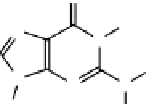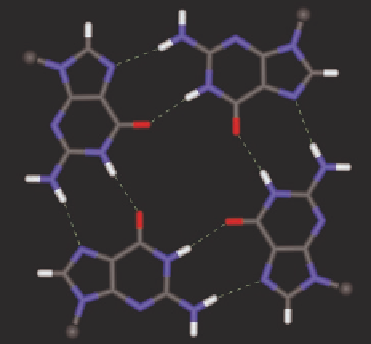Biology Reference
In-Depth Information
6
3
7
) located in a self-complementary
arrangement coupled with a polarized aromatic surface makes it a
unit able to easily self-assemble by both multiple hydrogen bonding
and
and acceptor sites (O
, N
and N
π
π
-
stacking.
A
A
O
D
H
N
6
N
1
2
7
5
D
8
4
9
H
3
N
N
N
R
H
A
D
Figure 4.1
The guanine base and the relevant hydrogen bonding
acceptor/donor sites.
Self-association of guanosine has been observed in solution since
the 19
[2] reported that
guanine bases are associated in a tetrameric arrangement described
as G-quartet arrangement (Hoogsteen hydrogen bond network) (Fig.
4.2) [3]. Interest in the structural arrangements of G-quartet-based
systems dates back to early 1990s by the identification that guanine-
rich sequences are abundant in telomeric ends of chromosomes and
promoter regions of DNA, and are capable of forming G-quartet-
based structures, the G-quadruplexes,
th
century, and in the 1960s Gellert
et al.
in vitro
[4].
Figure 4.2
The G-quartet.




Search WWH ::

Custom Search